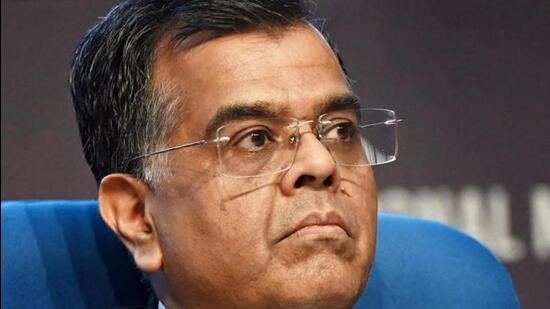Finance Secretary T V Somanathan, the top bureaucrat in the Union finance ministry who also holds the expenditure portfolio, has said that he prefers a conservative approach while estimating India’s GDP growth, and would back the numbers in the Economic Survey, whose forecast for FY25 was lower than that of RBI and some international agencies. In an interview to HT’s Rajeev Jayaswal, he said that the government is not shying away from spending on welfare schemes and infrastructure projects, while keeping borrowings under strict watch.
Edited excerpts:
The Economic Survey is cautious about India’s FY25 GDP growth forecast (6.5-7%), even as several independent agencies have projected it between 6.8 and 7% and the Reserve Bank of India’s (RBI) estimate is 7.2%. What is your assessment?
I would be closer to the Economic Survey’s estimate.
Why?
I have more confidence in their estimates.
The Indian economy is growing very fast compared to other major global economies…
It’s true. It is growing very fast, no doubt. Even estimates of the Economic Survey are not low. But, I think 6.5 to 7%… Also, by nature, for me economic growth is not an academic discussion. We have to plan our revenue and expenditure based on this figure. So, I will prefer to take the conservative figure. Just as a practical user. If I overestimate and finally, and we don’t get the money, then the budget will be in trouble. So, it is better to be conservative.
The budget proposed that from 2026-27 onwards, the government’s endeavour will be to keep the fiscal deficit each year such that central government debt will be on a declining path as a percentage of GDP. Will there be review of the FRBM Act, 2003 or FRBM Rules, 2004?
What we are saying is, up to now, traditionally, we have been having a target for the fiscal deficit. It used to be 3%. Of course, it was rarely actually achieved.… What we are saying is, we will reach a level below 4.5% by 2025-26. That commitment we have given and we are sticking to it. What happens after that? So, after that our objective is that [the] Central government debt, which is currently about 58% of GDP, this must steadily decline. How far it should decline, how fast it should decline, I’m not telling you today. But our objective is, it should decline and it should not rise.. 58 should not become 59. It should become 57, 56, et cetera… Every year we want it to become lower except in [exigencies such as] Covid or war or something. So, in normal times it must fall… Because India’s GDP is growing fast (instead of a 3% fixed number), we are moving away to a dynamic number. But it will be less than 4.5.
Some Opposition leaders accused the government that it is taking inflation lightly. While inflation is well below 6%, food inflation is very high.
The government is certainly not taking inflation lightly. It is taking inflation with all due seriousness. Multiple steps have been taken, and one particular step which you will find in this year’s budget is that we have made an allocation of ₹10,000 crore for the Price Stabilisation Fund. This is the fund which is used for creating a buffer stock of commodities like oilseeds and pulses. This is a record provision. Whenever the prices are falling below the MSP for these crops, the government will intervene to procure them, and then we’ll release it into the market when prices are higher. So, this will help stabilise prices and thereby to reduce the volatility in inflation… In addition, various other measurements government have been taking from time to time such as (low-cost) Bharat Aata and Bharat Rice.
Also Read:Fiscal consolidation, with a reform vision
The government has been giving 50-year, interest-free loans to states for past three-four years, besides capex funds. However, some states complain that they don’t get adequate funds from the Centre.
Yes, [interest-free loans] starting from 2021… There is no discrimination whatsoever. The devolution of money to states is based on the Finance Commission award… Centrally sponsored schemes are administered by the respective ministries, so I would not have the full details. But, I would say that I am not aware of any conscious discrimination against any state.
Is it possible to give special category status as per the current law after the concept is done away with by the 14th Finance Commission?
The whole concept of special category state originated in 1967 from the Planning Commission in 1967, which also no longer exists. The concept has lost relevance after the 14th Finance Commission. So, frankly, such a category doesn’t exist per se. However, it is true that the Centre continues to give a higher proportion of assistance to the northeastern and hill states. There is, of course, a special logic for these states, both in terms of the cost structure of transporting anything to the hills, fact that all of them are sensitive border areas. So, there has been a continuing practice that northeastern and hills states – [for] Centrally Sponsored Schemes, the Centre bears 90%. So, though there are no special category states, some of the other states are saying give us the same treatment. Broadly, that is the origin of the demand.
